An anemometer measures wind speed and making a DIY anemometer out of cups is a great school science project. In this article, we’re going to give you a step by step guide for how to make an anemometer with cups and straws and answer some questions you might have.
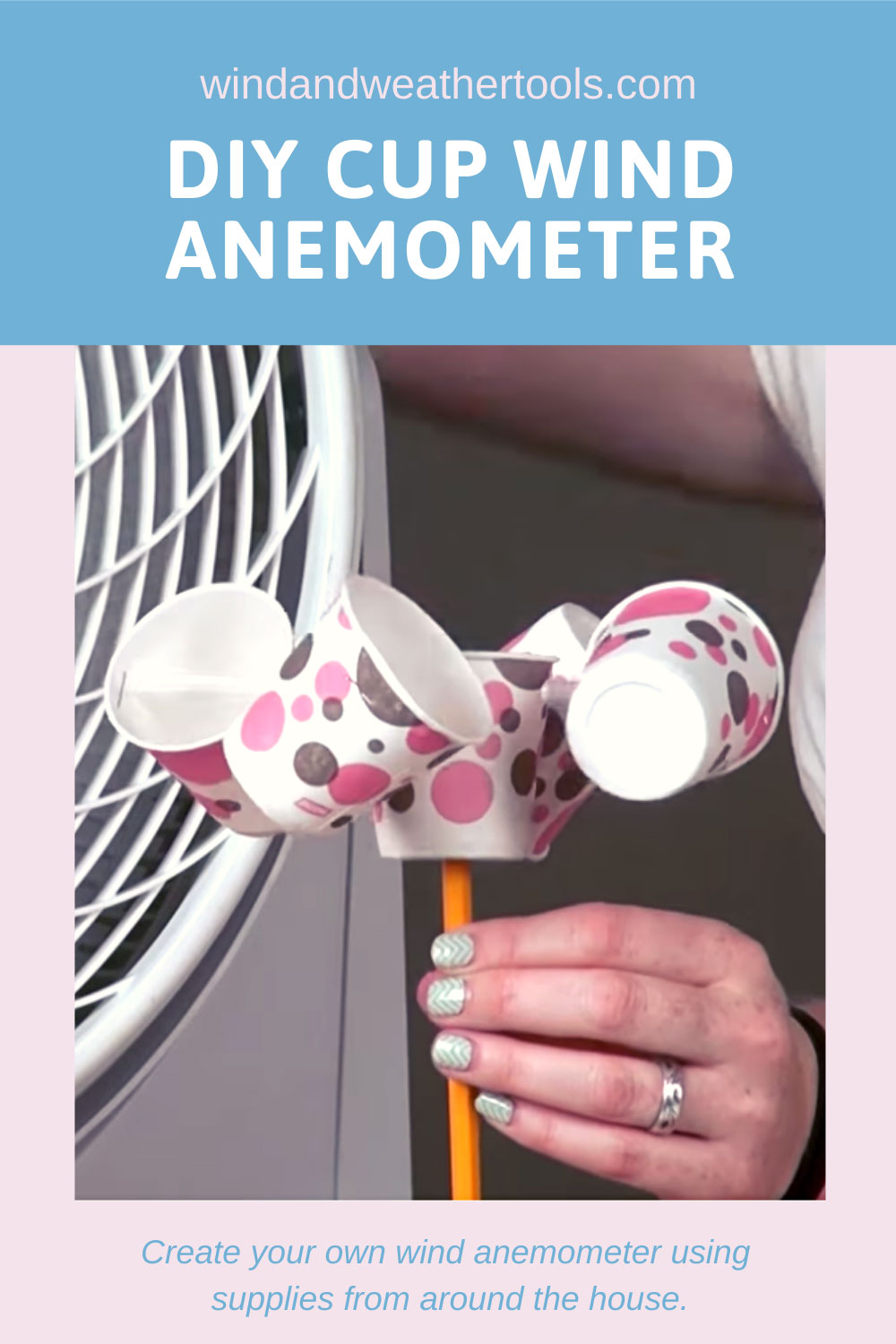
How to build a cup anemometer
This straightforward video shows you how to make an anemometer step by step. Below we’re going to repeat the steps and give you a little more detail on some of them. First, here’s what you will need:
Anemometer Ingredients
- Two long straws (Order on Amazon) or wooden dowels (Order on Amazon)
- Five small paper dixie cups (Order on Amazon or plastic Easter eggs (Order on Amazon)
- Two pencils – one sharpened, one unsharpened (Order on Amazon)
- A holepunch (Order on Amazon)
- A small stapler (Order on Amazon) or tearable tape if you’re using Easter egg cups (Order on Amazon)
- A sharpie marker for marking (Order on Amazon) or stickers if you’re using Easter egg cups (Order on Amazon)
- Straight pins (Order on Amazon)
- 1 personal sized soda bottle (empty)
- A stopwatch (order on Amazon) or a smartphone with a stopwatch app
How to build an anemometer at home – Step by step guide
Step 1 – Use the sharpened pencil to poke a hole in the bottom of one of your dixie cups or another type of paper cup if you’re using easter egg cups for your DIY anemometer. Then use your hole-punch to punch two sets of 2 holes (four holes total) so that each hole is perpendicular to another hole. One set of holes should be closer to the top rim of the cup, and the other set of aligned holes should be lower down.
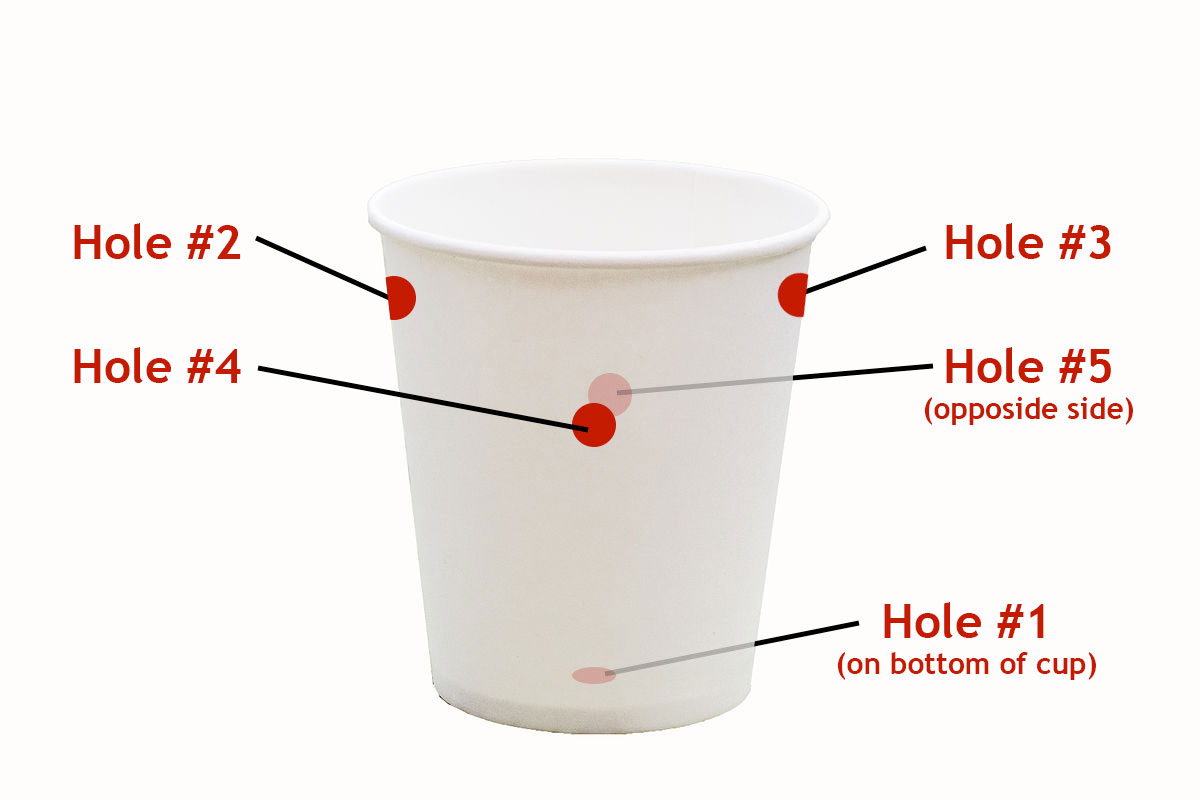
Step 2 – Insert the straws into the holes through the cup so they make an X when you look down at the cup from above.

Step 3 – Punch one hole into the sides of all four other dixie cups. Make sure each hole is roughly in the same spot on the cup.
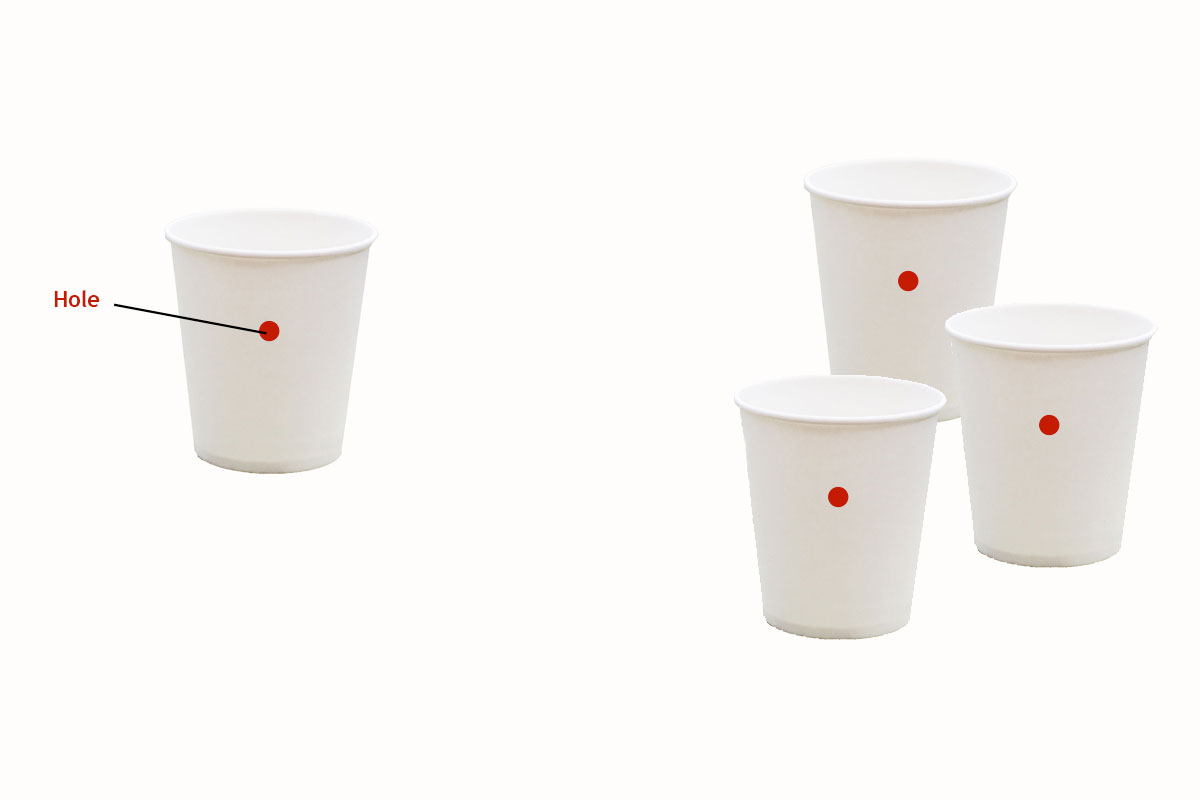
Step 4 – Thread all four ends of the two straws through the holes in your four dixie cups. Bend the edge of the straw so you can tape or staple it to the other end of the cup.
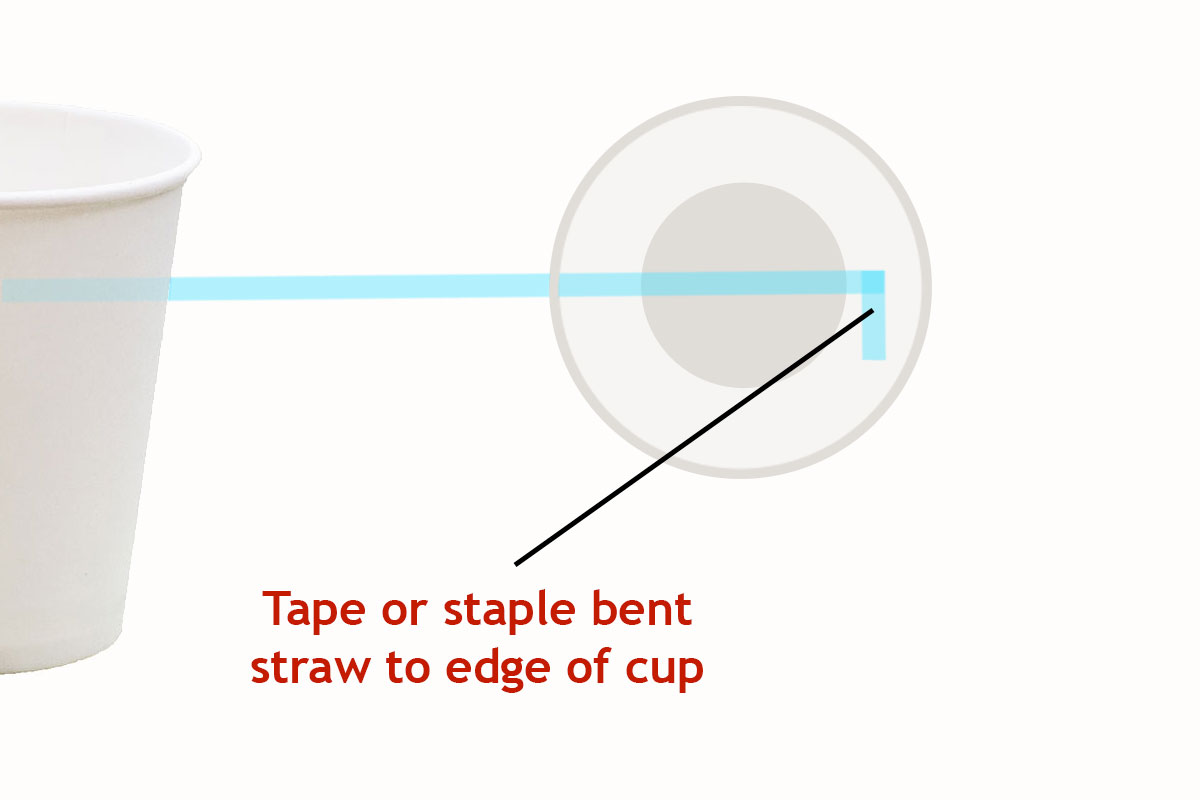
Step 5 – Your anemometer cups are now all assembled. Make sure that you’ve maintained the same direction for each cup. It should look like this, viewing from above:
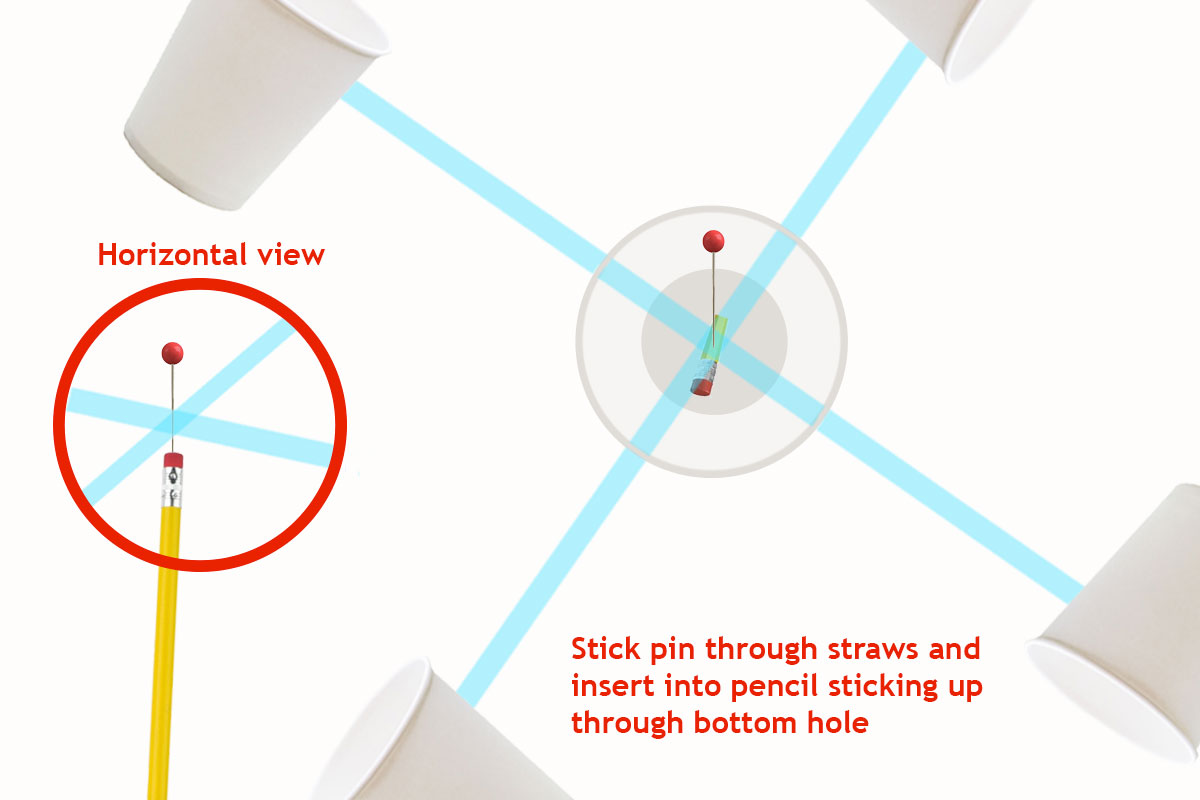
Step 6 – The cups should twirl in the air easily. To finish your anemometer, place the pencil into your empty plastic soda bottle for a base. You can use stickers or a marker to make an X on one of the four rotating cups which will make counting revolutions easier (it will be obvious how many times the red dot or X has turned around).
How to use your cup anemometer to measure wind speed
Have one person look at a stopwatch to see exactly how long ten seconds is. Use the following chart below to calculate roughly how fast the wind is blowing.
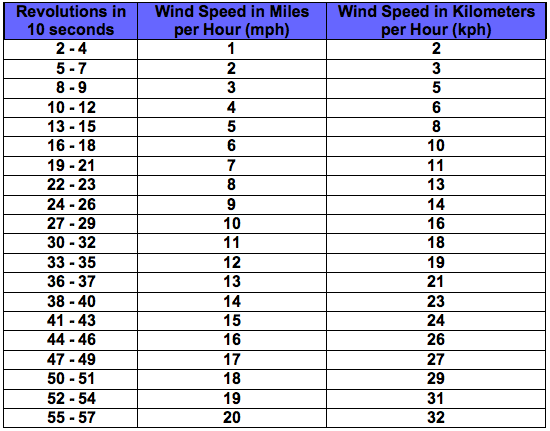
Alternatively you can “calibrate” your anemometer by driving exactly 10 miles per hour and seeing how many times your cups rotate when held out the window. However many revolutions are equivalent to wind blowing 10 miles per hour (assuming there is no additional wind blowing). Obviously you don’t want to be driving and sticking your arm out the window counting anemometer cup revolutions so you’ll need two people for this step.
(See our related article: the best anemometers for kids)
Frequently asked questions about cup counter anemometers
How does a cup anemometer work?
Cup anemometers are used by professionals to gauge wind speed. Normally anemometers will have built in computers that calculate how many revolutions they make per minute (or every 10 seconds or every 30 seconds, depending on how the computer is set up). The number of times that the wind pushes the cups around in a circle is then translated into the wind speed by the anemometer’s calculator into a unit like miles per hour, meters per second or whatever unit is desired. The more times the cups turn around in a circle, the faster the wind is blowing.
What is the difference between a 3 cup anemometer and a 4 cup anemometer?
Three cup anemometers are similar to four cup anemometers, they just simply have one less wind cup. For the purposes of this article about how to make an easy anemometer, we’re making a four cup model since that’s easier to make. Four cup models are also more common these days than 3 cup or 2 cup anemometers.
What is the cup anemometer working principle?
Cup anemometers feature a rotating array of wind cups that rotate as the wind blows. The faster the wind is blowing, the faster the cups will rotate. By measuring the number of cup rotations within a period of time (for instance within 30 seconds), we can calculate how fast the wind is blowing.
What other types of anemometers are there besides cup anemometers?
While this article is about how to make a kid friendly anemometer out of cups, there are several other types of wind guage instruments. Some examples include: hot wire anemometers (which measure how quickly a heated wire cools down in the breeze), ultrasonic anemometers (which transmit a sound signal to a reciever, measuring wind speed off of how long it takes to send it), and vane anemometers (which work on the cup principle but instead of rotating cups they have flat blades like a fan).
I don’t understand the instructions for how to make anemometer at home
Watch the “how to make anemometer video” at the top of this article for more information about how to build an anemometer out of cups for a school project.
I don’t want to use dixie cups, what else can I use for my homemade DIY anemometer cups?
Here are some ideas for how to make an anemometer with cups– using things other than dixie cups:
- Colorful plastic egg shells – separated in half
- Ping pong balls – sawed in half
- Paper cups or condiment cups
- Plastic soda bottles – sawed in half
You can also browse some professional anemometer cups for sale.
Terms Defined / Anemometer Vocabulary
Anemometer An anemometer is a device that measures the speed of the wind. Anemometers are used by many professionals who work in the wind energy field as well as meteorologists/weather scientists, hobbyists and others. Different anemometers measure wind speed differently, depending on how they’re designed.
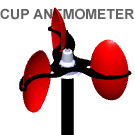 Cup anemometer A cup anemometer is a specific type of anemometer that measure wind speed by counting the number of rotations that a set of cups makes when the wind blows. Cup anemometers can be manual like the types of cup anemometers made of paper cups for science projects, or they can be electronic. Sophisticated cup anemometers can calculate the wind speed in units like miles per hour, meters per second or Knots (a naval unit of measurement for sailing). Simply put, the cup anemometer definition is: a wind speed gauge that uses rotating cups to measure wind speed.
Cup anemometer A cup anemometer is a specific type of anemometer that measure wind speed by counting the number of rotations that a set of cups makes when the wind blows. Cup anemometers can be manual like the types of cup anemometers made of paper cups for science projects, or they can be electronic. Sophisticated cup anemometers can calculate the wind speed in units like miles per hour, meters per second or Knots (a naval unit of measurement for sailing). Simply put, the cup anemometer definition is: a wind speed gauge that uses rotating cups to measure wind speed.
Wind energy Wind energy is power created by the wind blowing.
Windmill A windmill harvests the power of the wind and translates it into energy. Early windmills pumped water or milled grains but today modern wind turbines generate electricity.
Wind farm A wind farm is an array of wind turbines in a windy area that all work together to harvest a large amount of wind power.
Wind/weather vane A weather vane or wind vane is a flat instrument which rotates. Depending on which direction it’s pointing, it will tell you which direction the wind is blowing in.
Related articles:
All about anemometers: what they are, how they’re used & much more
The Best Portable Anemometers & Portable Weather Meters
What is the Best Wireless Anemometer & Wireless Wind Speed Meter?
The Best Cup Anemometers & How Wind Cups Work
What is an Anemometer and What is it Used For?